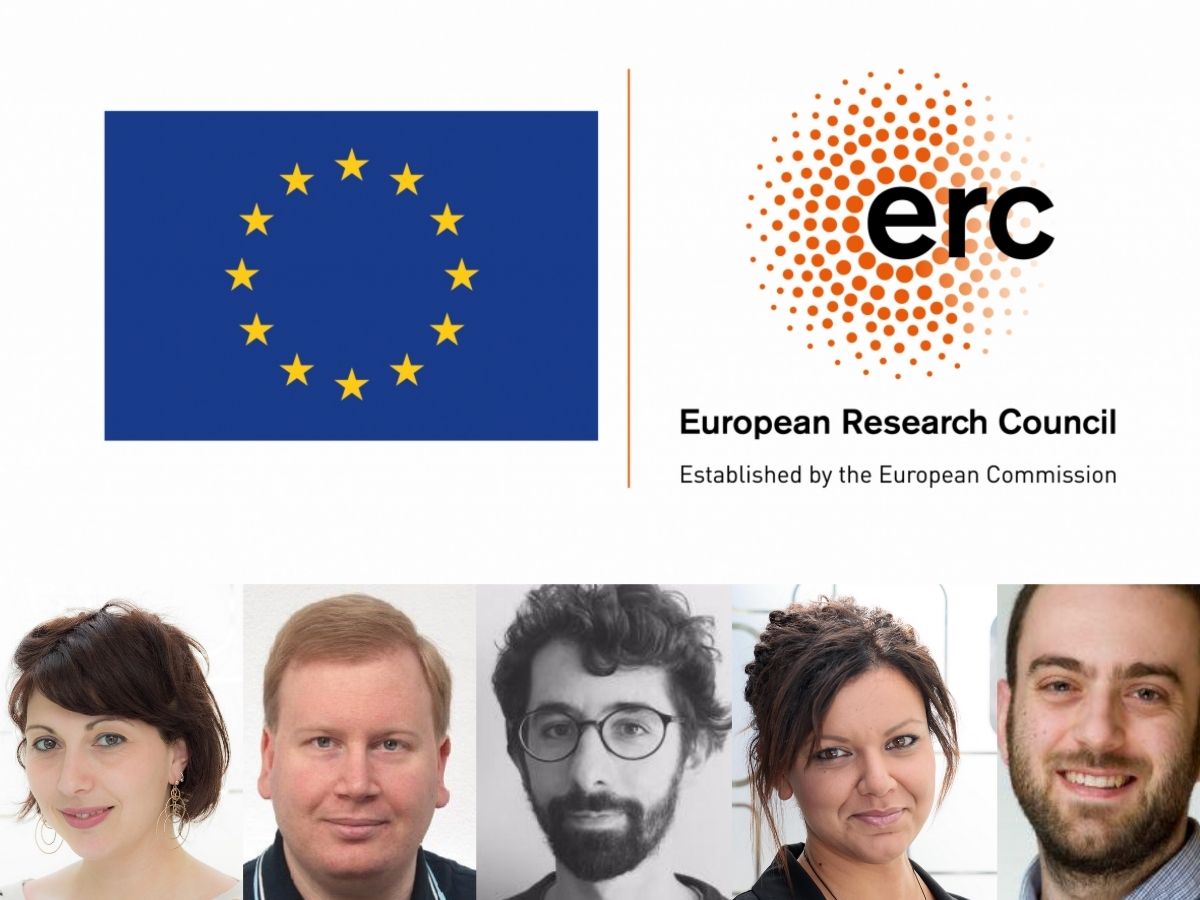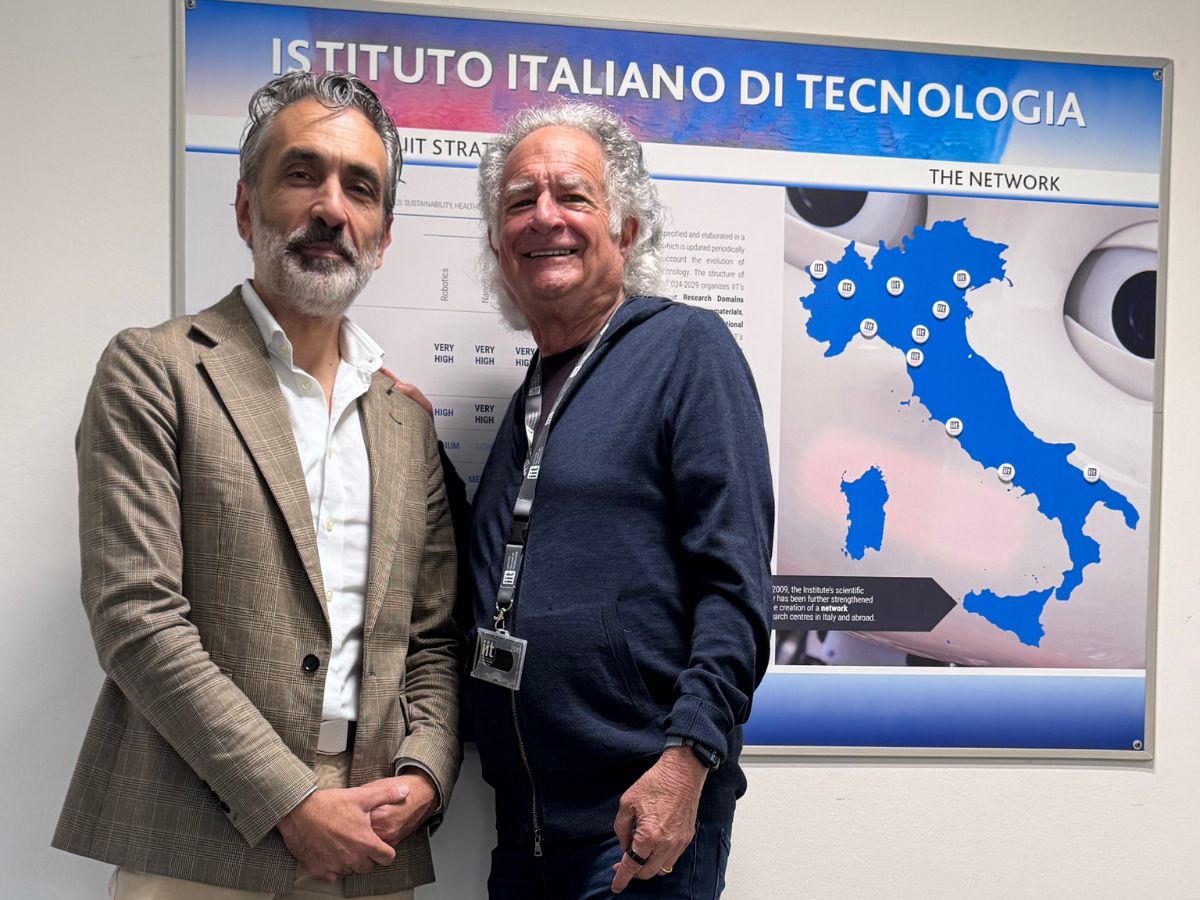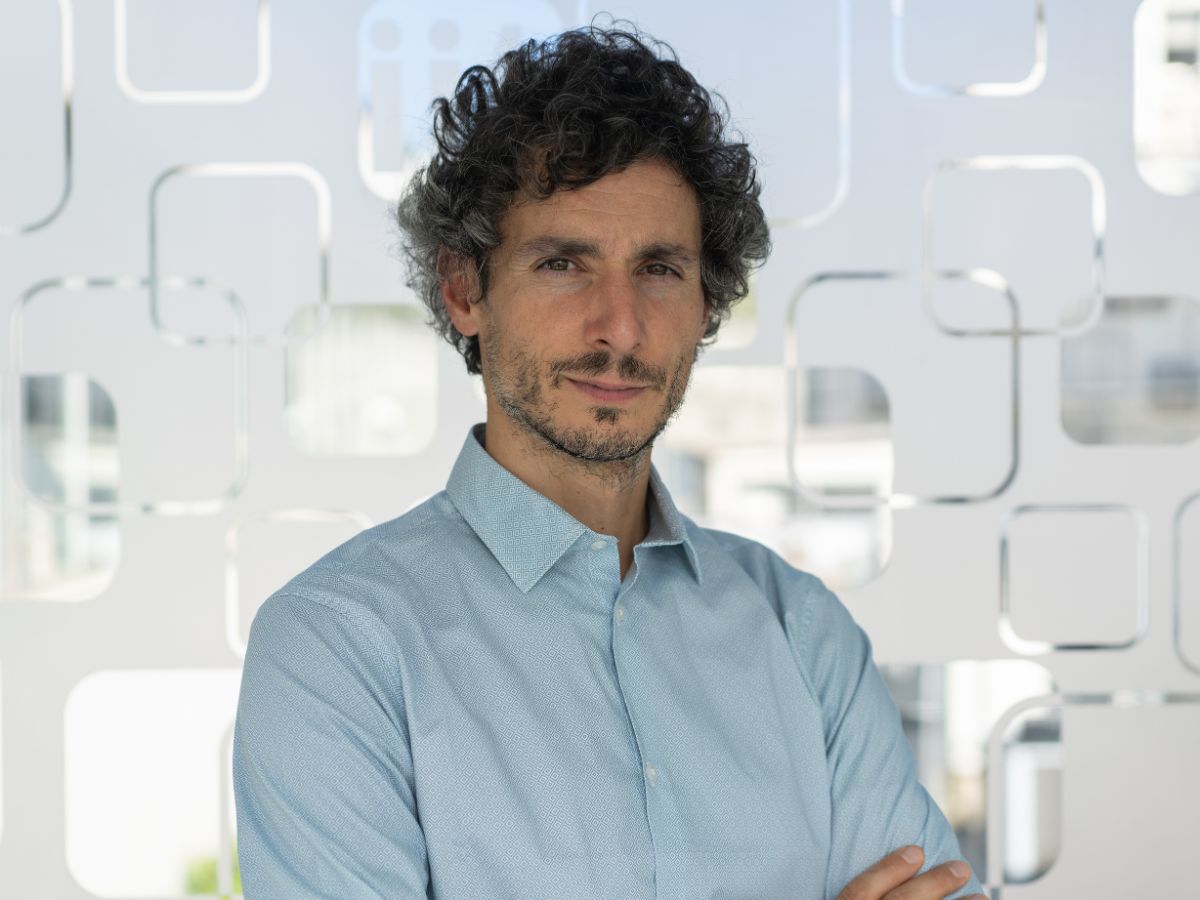Among the 20 projects that will conducted in Italy, 5 are obtained by IIT
Bioinspired microrobots able to navigate in body tissue as minimally invasive medical tools; artificial synapses speaking with neurons in order to restore brain functions in degenerative diseases; a deeper understanding of space representation in the brain to help visual impaired children to orientate themselves; new nanotech fabrication methods to create miniaturized and faster optoelectronics devices; and a study of the origin of music in our brain looking at the link with body movements. These are the 5 innovative projects awarded today by European Research Council (ERC) Starting grants, that will be conducted by 5 young Italian researchers in the next five years at IIT-Istituto Italiano di Tecnologia: Monica Gori, Giacomo Novembre, Stefano Palagi, Francesca Santoro and Michele Tamagnone.
The official ERC announcement was published today. There are 436 early-career researchers across Europe, selected from 3272 submitted proposals. The total investment is 677 million euros as part of the EU’s Research and Innovation programme, Horizon 2020. Funding will help individual scientists and scholars to build their own teams and conduct pioneering research across all disciplines.
The projects conducted in Italy will be 20, distributed across 14 different universities and research centers, among which IIT ranks first with 5 winners. The other projects will be carried out at the Polytechnic of Turin (2), University of Turin (1), Polytechnic of Milan (1), University of Milan (1), Bocconi University (1), University of Bologna (2), University of Padua. (1), University of Parma (1), IMT Lucca (1), University of Trento (1), University of Trieste (1), University of Naples Federico II (1), INFN (1).
The total IIT portfolio – from 2009 – reaches the count of 46 projects, obtained by 36 researchers, among which 14 are women, confirming IIT ability to attracts funds and scientists for cutting-edge projects in Italy, also promoting gender equality. Among the 5 new ERC grantees, Michele Tamagnone is an Italian researcher returning to Italy after nine years spent abroad, while Gori, Novembre, Palagi and Santoro are brilliant young researchers who have been already working in IIT.
Monica Gori is leading the IIT’s Unit for Visually Impaired People (U-VIP) Lab in Genova, studying how sensory perceptual capabilities change and interact during development in children with and without disabilities, in order to develop rehabilitation technologies. She graduated at the University of Florence in psychology, and then she spent few years at Neuroscience department of the CNR of Pisa. She received the PhD in Humanoid technologies at the University of Genoa. In 2012 she has been awarded with the Technology Review Under 35 Innovator Italia and the Smart Cup Liguria in 2015. She has been the scientific coordinator of two large European collaborative projects, ABBI and WeDraw, dedicated to the realization of new methods to improve spatial and cognitive skills in children with and without visual impairment. The ERC grant will permit her to developing a new area of research that links child development, visual impairment, and rehabilitation, starting from the understanding of spatial representation in the brain of children from infancy until adolescence. Her research project, called MYSpace, aims to identify the specific developmental periods when visual experience is crucial in establishing multisensory associations between vision and other modalities and how this process is affected in blind children and adolescents. As an outcome, MYSpace will provide a new quantitative methodology to restore the coherent spatial representations of blind infants through early multisensory trainings.
Giacomo Novembre is a cognitive neuroscientist working at IIT’s Center for Life Nano Science in Rome, studying the human brain and cognition with a multidisciplinary approach. He graduated in philosophy at San Raffaele University in Milano and then he moved to the Netherlands (Donders Institute, Nijmegen) and to Germany (Max Planck Institute, Leipzig) to study neuroscience, obtaining a MSc and a PhD. He then worked as a post-doctoral fellow in Australia at Marcs Institute in Sydney and in the UK at the University College London, exploring sensorimotor integration, that is the brain’s capacity to integrate sensory input with motor processes. Thanks to his ERC project, Novembre will study “communicative musicality”, that is the innate ability to communicate through music, and specifically the role played by body movement. His project MUSICOM builds on the fact that not only it takes movement to make music, but also that listeners (of all ages and cultural backgrounds) move in response to music. MUSICOM aims to change how we view and study music: shifting from an elite activity to a communicative predisposition accessible to everyone. MUSICOM will have important implications for understanding the neurocognitive building blocks of human communication and its development. It will ultimately provide an empirical ground for testing the widespread use of music in clinical settings.
Stefano Palagi is a postdoc in the Bioinspired Soft Robotics group at the IIT’s Center for Micro-BioRobotics in Pisa. After obtaining his PhD degree at IIT and Scuola Superiore Sant’Anna, he spent four years as postdoctoral researcher at Max Planck Institute for Intelligent Systems, in Germany, and he was fellow of the Max Planck ETH Center for Learning Systems. His research focuses on microrobotics, that is the development of robotic devices of microscopic size (less than one millimetre). He developed the first microrobots that actually swim in liquids, like real biological microorganisms. Thanks to ERC grant he will further develop his study, aiming at realizing the first microrobots capable of autonomous navigation of body tissues for application in minimally invasive medicine. His ERC project, called CELLOIDS – meaning “cell-inspired microrobots” – takes inspiration from biological cells that naturally move through body tissues, such as white blood cells. Palagi will thus develop microrobots able to mimic “amoeboid movement” of cells, which are able to spontaneously adapt their body-shape to their surroundings. The celloids will autonomously find their way through complex tissue-like media, eventually enabling revolutionary medical procedures such as long-term monitoring and non-invasive interventions in delicate organs.
Francesca Santoro is leading the Tissue Electronics Lab at IIT’s Center for Advanced Biomaterials for Healthcare in Naples. After she graduated at the University of Naples ‘Federico II’, she received a PhD in Electrical Engineering and Information Technology in a joint partnership between the RWTH Aachen and the Forschungszentrum Juelich in Germany. In October 2014, she joined the department of Chemistry at Stanford University in USA. In 2017 she was back in Italy, joining IIT, and one year later she has been awarded the MIT Technology Review Under 35 Innovator Italia and Europe and in 2019 she has been nominated MIT Technology Review Ambassador, because of the invention of a new patch that, interacting with cells, permits to healing damaged skin. Thanks to ERC grant Santoro will further develop technological devices that act at the interface between biological and artificial tissues, specifically interactive brain implants, to be applied in the treatment of neurodegenerative disorders like Parkinson’s and Alzheimer’s. Therefore, her project BRAIN-ACT aims to upgrade to the next level biohybrid devices to couple biological neuronal networks to organic artificial neurons. Santoro will develop a new class of chip-based smart bioelectronic devices which will ‘look like neurons and act like a neuron’, permitting to both monitor and stimulate neuronal activity across neural networks. For the first time, neurons will interact with an artificial counterpart by actively interacting with it electrically and biomechanically, and thus establishing the optimal electrical signal exchange among neurons in damaged brain area.
Michele Tamagnone will come back to Italy, in IIT at Genova, after 9 years spent abroad studying two-dimensional materials, such as graphene, for optoelectronics applications. He graduated in Electrical Engineering at Politecnico di Torino, and the obtained his Ph.D. degree at École polytechnique fédérale de Lausanne (EPFL), Switzerland. Subsequently he was a postdoctoral researcher at Harvard University funded by the Swiss National Science Foundation. Thanks to the ERC Starting Grant, Tamagnone will fund his future research at the IIT, focusing on the SubNanoOptoDevices project, aiming to create a completely new class of optoelectronic devices based on nanostructured materials. Tamagnone will explore the use of a new nanofabrication method to achieve structures with sizes in the order of few nanometers to less than one nanometer based on 2D materials to create devices such as modulators and with unprecedented performances in terms of speed (reaching modulation bandwidths beyond 100 GHz) and miniaturization. At the nanoscale, the electrical and optical properties of materials are described by quantum mechanics, and new effects can be explored to enhance the interaction between light and matter, which is essential for optoelectronic devices. The project will focus on devices operating at room temperature and integrated on silicon, to ease the subsequent implementation of this ground-breaking technology into large scale production.
For further information:
Link to ERC press release: https://erc.europa.eu/news/StG-recipients-2020





